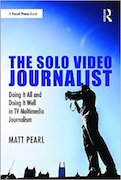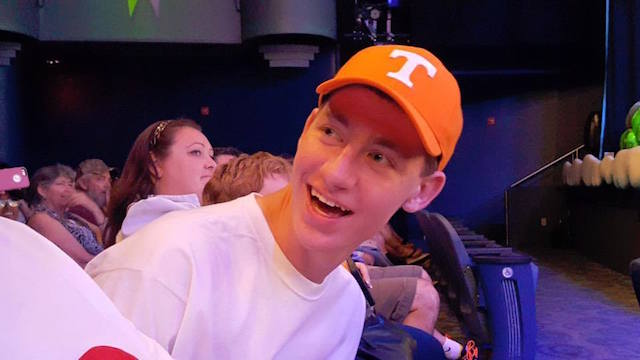With the year wrapping up — and with me out of town this week on vacation — I made an executive decision regarding the blog:
It’s time for a compilation list.
I have experienced and written about quite a bit this year, and I have been heartened by the massive response I have received from people within the journalism community. I started this blog four years ago with the intent of helping storytellers and journalists improve at their craft. I hope entries like these have provided some guidance for doing that, through either my personal examples or those of others.
Here are my five most popular posts of 2016, along with an excerpt:
5) Remembering Clem Ferguson, the 96-year-old flight attendant (4/27/16): This was one of the more touching stories I got to tell this year. Clem Ferguson made a huge impression in a short amount of time.
Most television news reporters try to avoid clichés, but we tend to stumble upon one when people ask what we love most about our jobs.
The recurring answer? “Meeting people and telling their stories.”
I can’t deny it. I love that part of my job. Nearly every day involves meeting someone new; nearly every meeting involves learning something new. I continuously meet people who make me think, laugh, smile, and even cry.
And on the rare occasion, I get to meet someone like Clem Ferguson.
This past April Fool’s Day, I was assigned to tell Clem’s story, and it was a great one. Clem, I was told, was a lifetime Georgian who had finally received the chance, after 96 years, to live her childhood dream.
That dream? She had always wanted to become a flight attendant.
4) 5 Great Stories: the all-Boyd Huppert edition (10/31/16): This post was so popular — and received enough comments asking for more Huppert classics — that it was immediately followed by a “5 More Great Stories” edition.
It’s time to pay tribute to a legend.
This past Saturday, KARE-TV feature reporter Boyd Huppert received the coveted Silver Circle award from the National Academy of Television Arts & Sciences. The honor often reflects longevity — a lifetime achievement award, if you will.
But few journalists have reached Huppert’s level of achievements.
In fact, that same night, Huppert won his 100th regional Emmy award — one of 11 he received for 2016.
In addition to his Emmys, Huppert has won 14 national Edward R. Murrow awards and three Sigma Delta Chi awards; he has received, on seven occasions, the NPPA’s Photojournalism Award for Reporting. Beyond that, Huppert has inspired thousands of journalists through both his teaching and his example, and he has touched millions with his heart-warming stories.
A far less prestigious achievement? He is by far the most mentioned reporter on this blog. In nearly four years, I have tagged Huppert in 23 posts — the majority of which have come as shout-outs for his work in this “3 Great Stories” segment.
3) My Olympics Journey: I tried a coxinha, and Brazilian Twitter went wild (8/3/16): I could never have anticipated this being the 3rd most popular post of 2016. But I could never have anticipated that a simple Tweet would become such a joyous moment.
I can barely believe it, but I have already been in Brazil for nearly a week. In that time, I have done multiple reports and made numerous posts to Facebook and Twitter, cataloging some of Rio de Janeiro’s most iconic sights and elaborate Olympic venues.
But nothing has gained as much attention as a seemingly innocuous Tweet about a Brazilian culinary staple.
On Wednesday, a large group of us went on a day-long tour of the city, and midway through we stopped at the famous Selaron Steps. As we wrapped up and awaited our buses, one of my colleagues began talking with a Rio resident and pointed at an item in her hand from a street vendor.
It was a coxinha.
I had no idea what a coxinha was, but my colleague described it as a chicken hush puppy. Then she started passing it around.
I had to try … and I’m glad it did, because it was delicious. Within minutes, I posted the proof of my culinary victory to Twitter. It received a few likes and re-Tweets but quickly sank into the ether, like nearly every other Tweet, never to surface again.
Except it did.
2) Logan lives on: the triumph of a heart-warming story (9/7/16): This entry is a lesson in so many things, from the importance of pushing past first impressions to the power of social media.
I just spent most of August covering an event that captivates the world. I worked at the 2016 Summer Olympics for three weeks, produced 36 packages, made dozens of social media posts, and wrote 13 entries for this blog. Many of those packages, posts, and entries spread a great distance and performed very well both on-air and online.
But my most-read blog post from last month? It had nothing to do with the Olympics. It wasn’t in any way new; I had written it ten months earlier. And it was read nine times as much as the second-most popular post.
It was about a young man who has now touched hearts as worldwide as the Olympics.
If you have not heard or seen the story yet, let me catch you up. Logan Pickett is a teenager from Ringgold, Ga. who was diagnosed at a young age with autism. He struggles in social situations and, for a long time, had difficulty getting involved at his school. But his mother got him involved as a manager for the middle school football team, and he continued doing it into high school.
Logan absolutely awakened. He became a force on the Heritage High School sidelines, exhorting the crowd to, as he says, “Let me hear you!” But he never got to play … until last fall, when Logan’s coach conspired with an opposing coach one week to let Logan suit up, take a handoff, and score a touchdown.
1) Introducing The Solo Video Journalist, a how-to guide for aspiring MMJs (11/16/16): I put an enormous amount of effort into The Solo Video Journalist, a book I wrote and had published this year. I have been so gratified by the positive reaction from those in the storytelling community.
I am a television news reporter for the NBC affiliate in Atlanta, Ga., the 10th largest TV market in the country. But I am also my own photographer, shooting and editing the video that becomes my pre-produced reports. From the start of my day to the finish, I am almost always on my own.
And I represent a growing reality in TV news.
The term “multimedia journalist” gets thrown around in the news business, but in television it has a clear meaning. It refers to a journalist who produces a report from start to finish, combining the jobs of a traditional reporter (researching, interviewing, writing) with those of a traditional photographer (shooting, editing). We now occupy a substantial part of TV newsrooms; per the latest survey, roughly nine of every ten local network affiliates use them in some capacity. When aspiring television journalists go to college, they are warned they will almost certainly start their careers – and likely spend a good chunk of them – as one-woman and one-man bands.
Yet no book exists that offers a comprehensive overview of what the job entails, with the insights and authorship of journalists working in the business.
So I wrote one.
I am proud and excited to announce the release of The Solo Video Journalist, available now on Amazon and Barnes & Noble. It is a how-to guide for a position in TV news that is long overdue for such analysis: the multimedia journalist, or MMJ.

The Solo Video Journalist is available for purchase. You can find it on Amazon, Barnes & Noble, and the publisher’s web site.
Matt Pearl is the author of the Telling the Story blog and podcast. Feel free to comment below or e-mail Matt at matt@tellingthestoryblog.com. You can also follow Matt on Facebook and Twitter.




